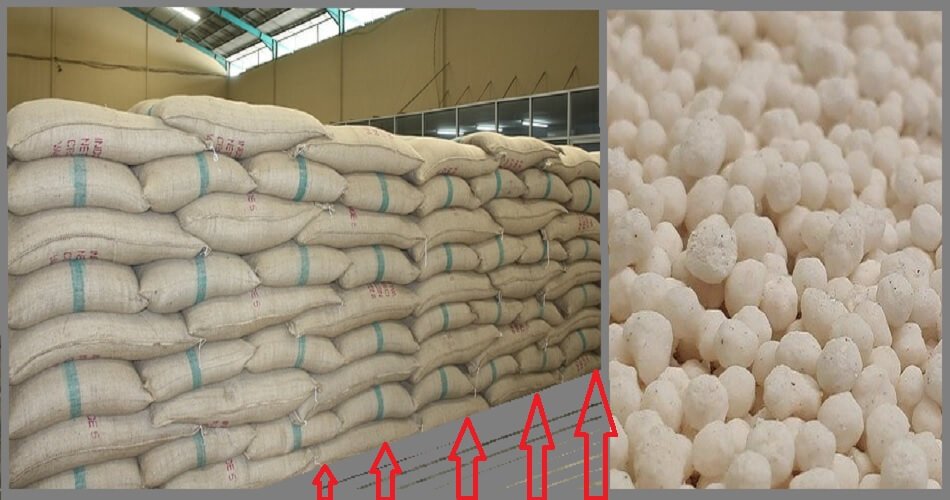A senior government official said on Wednesday that the government is aiming for a higher-than-expected opening stock of urea and DAP nutrients to ensure an adequate and timely supply of fertilizers to farmers in the upcoming 2022 Kharif season.
Sowing in the Kharif (summer) season typically begins in July, with the arrival of the Southwest monsoon. However, the Kharif season necessitates the use of fertilizer mostly between April and September.
The official stated that advance preparations have been made to source fertilizers and raw materials from the global market for the next season, which will aid in maintaining higher-than-expected opening stocks of urea and Di-Ammonium Phosphate (DAP), both of which are widely consumed in the country.
Also Read | Fertilizer Ministry approved import of 1.6 Mt of urea at ₹11,500 Cr
The initial stock of DAP for the 2022 Kharif season is expected to be 25 lakh tonne, up from 14.5 lakh tonne in the previous season.
The initial stock of urea for the next Kharif season will be 60 lakh tonne, up from 50 lakh tonne in the 2021 Kharif season, according to the official.
According to the government source, India is in negotiations with various nations and is looking into long-term arrangements for the provision of essential soil nutrients.
The early preparations are being made while global fertilizer prices remain high due to constrained supply caused by the COVID-19 epidemic and limitations imposed by China, from which India imports 45 percent of its DAP demand and some quantities of urea, according to the official.
Unlike urea, the pricing of DAP and other phosphatic fertilizers are set by private enterprises. The rise in global raw material prices has had an impact on domestic DAP rates.
However, the government increased the nutrient-based subsidy on DAP and NPK fertilizers separately for the 2021 Kharif and present rabi seasons to guarantee farmers have access to soil nutrients at reasonable prices.
The government also asked fertilizer companies not to sell DAP for more than Rs 1,200 per bag of 50 kg. Also Read | MCF Ltd, to revamp its ammonia plant, hopes to operational by June 2022
Aside from increasing the subsidy, the government has been micro-monitoring the movement of goods around the country and collaborating with the railways to expedite the transportation of rakes from factories and ports to district offices.
According to the official, a war room has been established to track whether the fertilizer stock at the district level (particularly in the most DAP and urea consumed states of Uttar Pradesh, Punjab, Haryana, and Madhya Pradesh) is adequate or not, and to make appropriate arrangements for the neediest districts.
With the backing of state governments, this technique helped handle the situation and enhance availability across the country during the Kharif and ongoing rabi seasons, according to the source.
When a record 1.5 million tonnes of fertilizer were imported in October-November of last year, the government expedited their transfer from ports to district headquarters with the help of the Railways.
On a daily basis, the number of rakes climbed to 70 from the regular 50-55 rakes. The officer said that there were around 30 DAP and NPK fertilizer rakes. Also Read | TN CM writes to Center requesting to supply additional DAP and MOP
After successfully tackling supplies in the previous two seasons, the Fertiliser Ministry is prepared to provide a smooth, adequate, and timely delivery of vital soil nutrients in the next Kharif season.


















Add Comment